Tuesday, September 20
On Tuesday, all our friends had to work, and so we decided to drive to Kassel to see Documenta fifteen. We had seen the previous event in 2017. We rented a car from the Berlin Zoo area. The drive was reasonably uneventful — the VW Golf was a little too old to have CarPlay, but it had really good adaptive cruise control, and it was a pleasure to drive with it on the Autobahn. The trip made me wish that someone would write an app for a Tesla, using its sensors, that would display how fast the car zipping by you on the left was going — I was often going 140 and passed by cars going well over 200. We arrived at our little airbnb in the suburb of Harleshausen, and walked to a nearby restaurant called “Shan Dong”, which turned out to be really good. Wikipedia says that Shan Dong province is noted for educational and religious institutions. We had dumplings, cumin lamb, and eggplant.
Meanwhile, I’d gotten a sore throat (I was happy to get tea and soup). I hoped it wasn’t Covid.
Wednesday, September 21
I woke up and tested myself, and it was negative, so I felt I wouldn’t be spreading anything to artgoers.
Each edition of Documenta, every five years, has been curated by some artist, but this year it was curated by an Indonesian collective. They decided to involve several other collectives in the planning. So all of the art we saw was produced by these collectives, but also on display everywhere was extensive descriptions of the Process.
All of the collectives were from cultures who are unrepresented in traditional art museums — Indonesian, Haitian, Malian, Palestinian, Roma — there basically wasn’t any First World art at all. There was rage at this exclusion:
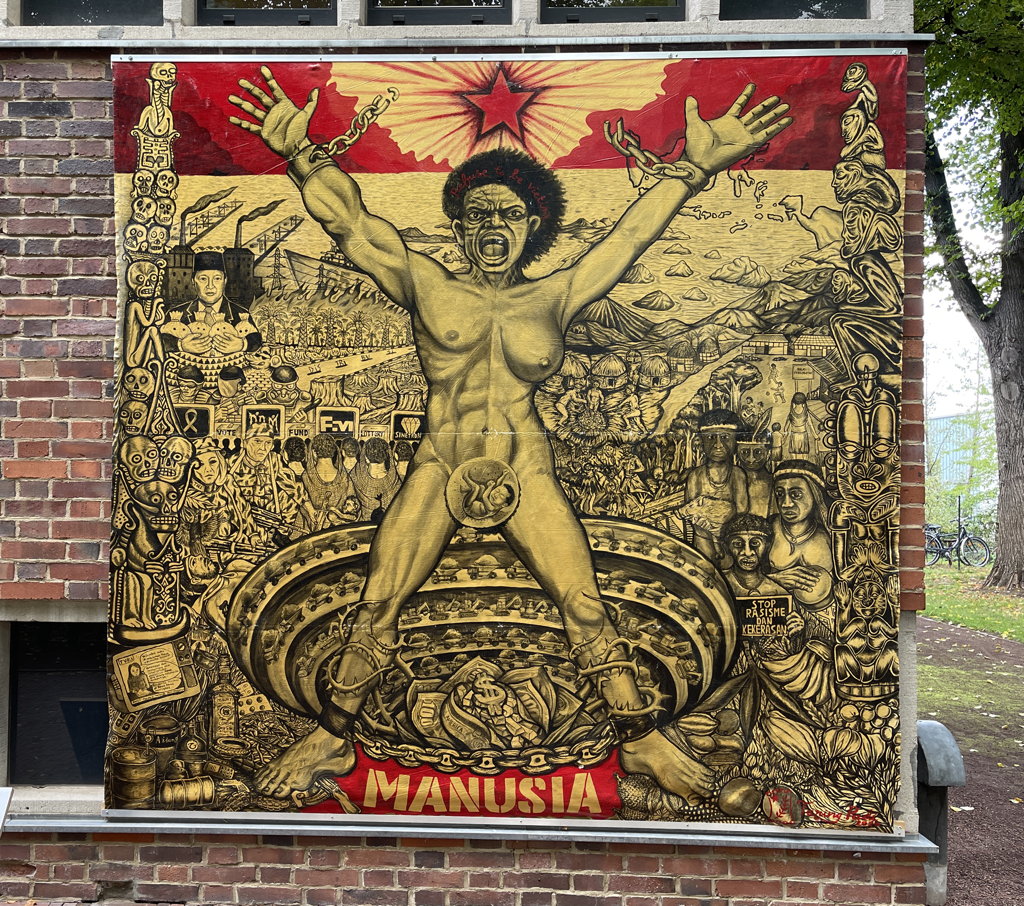
Regardless of their level of patronage and their cultural background, modern artists face many of the same problems.

Documenta’s documentation advertised a parking lot they’d set up, but Apple and Google Maps were unable to route us to it, other than on bike paths. There were no descriptions in the brochures of how to get into the parking lot. We gave up and parked on the street.
The most memorable venue was a small Catholic church which had been gutted of pews, etc. A Haitian collective had installed several metal sculptures outside and in the main sanctuary area. It is not clear, whether the church had an organ, but a row of organ pipes had been propped up in the balcony along with a sound installation. A scale model of the neighborhood in Port-au-Prince where the artists worked hung upside down from the ceiling.
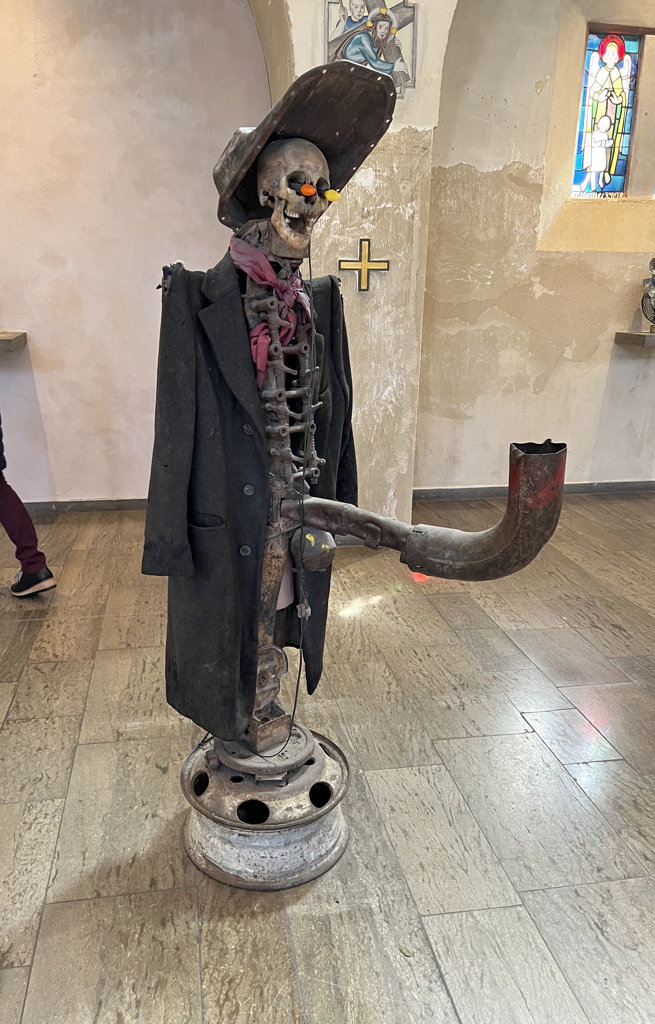
Many of the venues were east of the Fulda river in the “derelict building” district, in derelict buildings. One large one featured a “wall of puppets” from a Malian collective. You can see why the Indonesian curators were drawn to them.
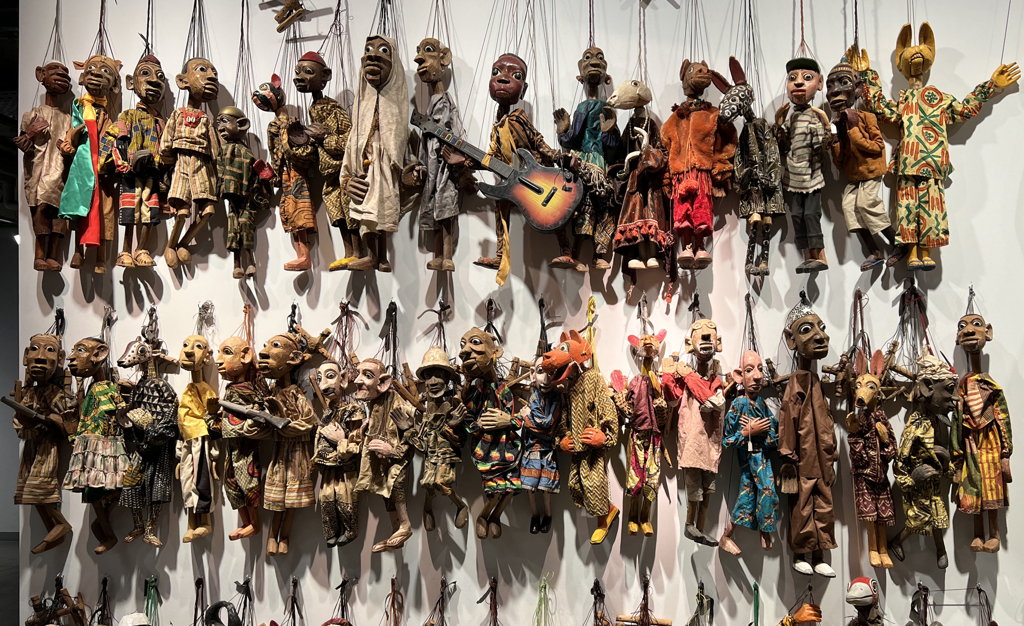
We walked through the Fredericium, the main art museum in Kassel, where the most memorable work was a monumental painting of the Hungarian Roma origin story. It had been in a children’s center when it was painted, and then stuck away somewhere. They were all happy to get it on display.
There were several cute things in the Documenta Halle.
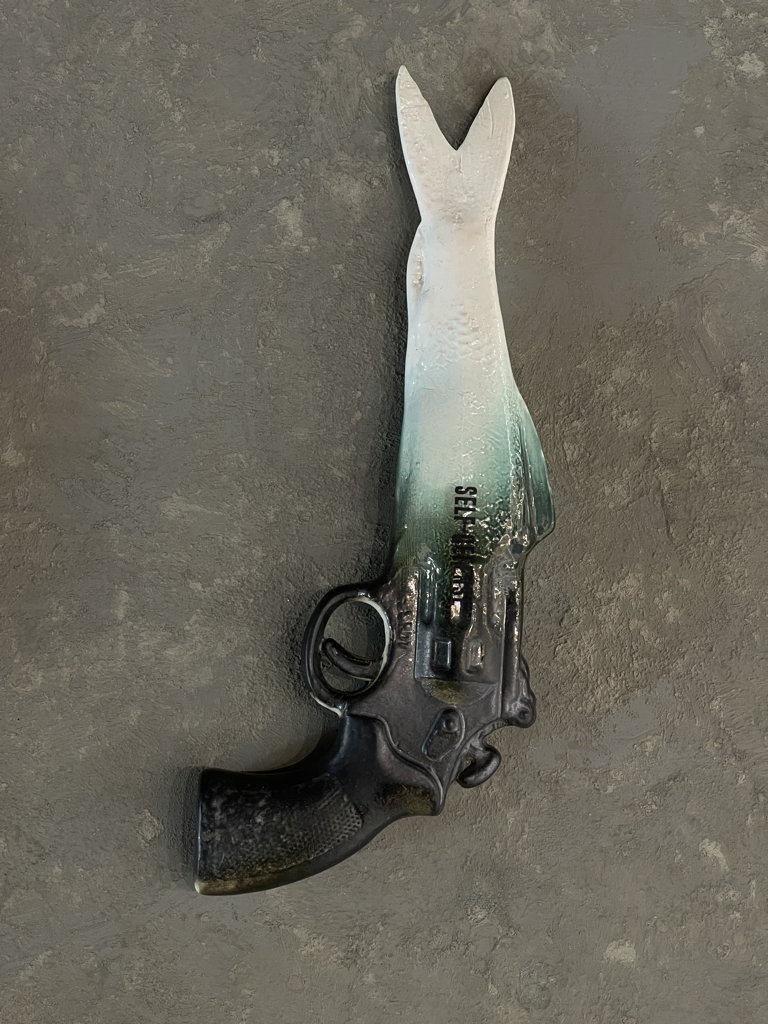
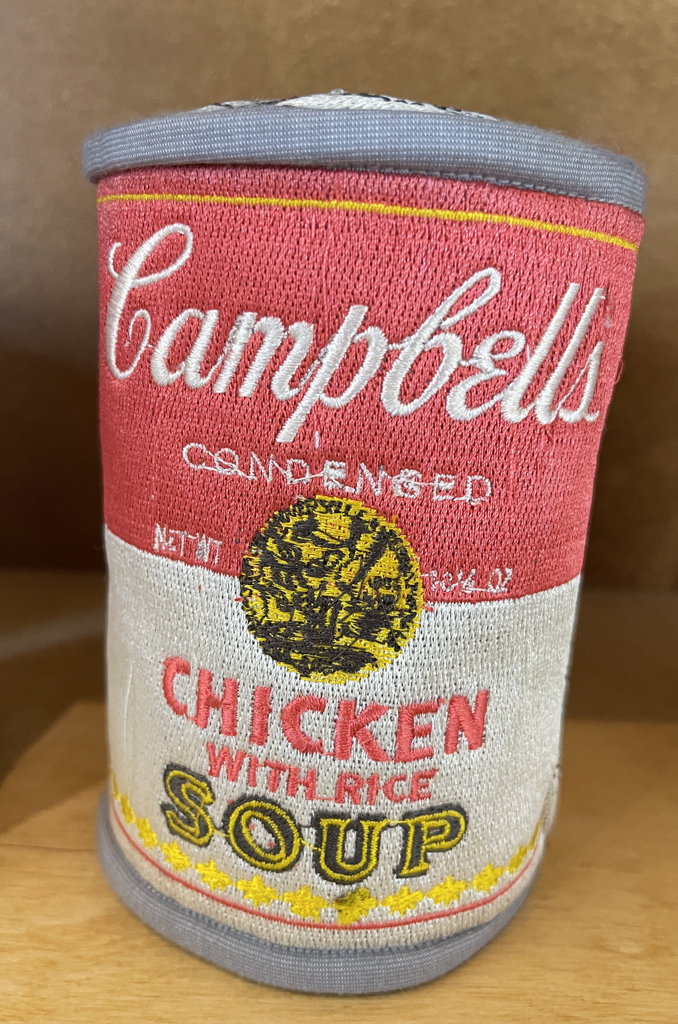
The cutest was when a young woman walked up to us and asked if we were on a poster for an art show by our friend Thomas. We had been, and we took pictures.

We were able to get a dinner reservation at a German tourist restaurant at the base of the Hercules mountain we’d walked up five years earlier. It was decent.
Thursday, September 22
I woke up and tested myself again, and it was still negative. I felt once again I wouldn’t be spreading anything to artgoers.
We walked around the derelict building district a bit more, and saw more art. The most memorable piece was from a Palestinian collective, a chapter from a graphic novel presented on large panels, featuring photographs of actors and text balloons. Several women were interviewing important people about art made by women, and whether it was “women’s art”, or just “art”. The interviewers were all male actors in drag.
We walked across a couple bridges looking at pieces by the river, and passed a large pickaxe made by Claes Oldenburg for documenta 7 in 1982. We asked a woman selling documenta-branded beer about it, and ended up having a nice conversation with her.
Then, after seeing an augmented-reality exhibit on the way, we walked to Mondi, a Michelin-mentioned tasting-menu restaurant (59 euros). It was a fun dinner with several creative bites, and a sommelier providing thorough descriptions of the wines which all turned out to be white.
Friday, September 23
We left our airbnb and drove up to Braunschweig to meet Jonathan, Dennis’ 13-month-old nephew. We ate at a potato restaurant with Dennis’ folks Klaus and Lisa, and brother Thomas and his wife Daniela.
Then we continued on to Berlin.